Volume 29, Issue 1
Displaying 1-35 of 35 articles from this issue
- |<
- <
- 1
- >
- >|
Special lecture
-
2009Volume 29Issue 1 Pages 1-8
Published: March 31, 2009
Released on J-STAGE: June 02, 2010
Download PDF (634K) -
2009Volume 29Issue 1 Pages 9-15
Published: March 31, 2009
Released on J-STAGE: June 02, 2010
Download PDF (358K)
Current speech
-
2009Volume 29Issue 1 Pages 16-17
Published: March 31, 2009
Released on J-STAGE: June 02, 2010
Download PDF (178K) -
2009Volume 29Issue 1 Pages 18-25
Published: March 31, 2009
Released on J-STAGE: June 02, 2010
Download PDF (418K) -
2009Volume 29Issue 1 Pages 26-33
Published: March 31, 2009
Released on J-STAGE: June 02, 2010
Download PDF (421K) -
2009Volume 29Issue 1 Pages 34-39
Published: March 31, 2009
Released on J-STAGE: June 02, 2010
Download PDF (378K)
Original article
-
2009Volume 29Issue 1 Pages 40-48
Published: March 31, 2009
Released on J-STAGE: June 02, 2010
Download PDF (487K) -
Relevance of discourse characteristics and cognitive function in adults with right hemisphere damage2009Volume 29Issue 1 Pages 49-59
Published: March 31, 2009
Released on J-STAGE: June 02, 2010
Download PDF (426K) -
2009Volume 29Issue 1 Pages 60-65
Published: March 31, 2009
Released on J-STAGE: June 02, 2010
Download PDF (324K)
-
2009Volume 29Issue 1 Pages 66-70
Published: March 31, 2009
Released on J-STAGE: June 02, 2010
Download PDF (1002K) -
2009Volume 29Issue 1 Pages 70-73
Published: March 31, 2009
Released on J-STAGE: June 02, 2010
Download PDF (995K) -
2009Volume 29Issue 1 Pages 73-75
Published: March 31, 2009
Released on J-STAGE: June 02, 2010
Download PDF (976K) -
2009Volume 29Issue 1 Pages 75-78
Published: March 31, 2009
Released on J-STAGE: June 02, 2010
Download PDF (990K) -
2009Volume 29Issue 1 Pages 78-81
Published: March 31, 2009
Released on J-STAGE: June 02, 2010
Download PDF (987K) -
2009Volume 29Issue 1 Pages 81-84
Published: March 31, 2009
Released on J-STAGE: June 02, 2010
Download PDF (984K) -
2009Volume 29Issue 1 Pages 85-88
Published: March 31, 2009
Released on J-STAGE: June 02, 2010
Download PDF (1002K) -
2009Volume 29Issue 1 Pages 88-91
Published: March 31, 2009
Released on J-STAGE: June 02, 2010
Download PDF (996K) -
2009Volume 29Issue 1 Pages 91-94
Published: March 31, 2009
Released on J-STAGE: June 02, 2010
Download PDF (1002K) -
2009Volume 29Issue 1 Pages 95-100
Published: March 31, 2009
Released on J-STAGE: June 02, 2010
Download PDF (991K) -
2009Volume 29Issue 1 Pages 100-102
Published: March 31, 2009
Released on J-STAGE: June 02, 2010
Download PDF (993K) -
2009Volume 29Issue 1 Pages 102-108
Published: March 31, 2009
Released on J-STAGE: June 02, 2010
Download PDF (1000K) -
2009Volume 29Issue 1 Pages 109-118
Published: March 31, 2009
Released on J-STAGE: June 02, 2010
Download PDF (1020K) -
2009Volume 29Issue 1 Pages 118-128
Published: March 31, 2009
Released on J-STAGE: June 02, 2010
Download PDF (1021K) -
2009Volume 29Issue 1 Pages 128-132
Published: March 31, 2009
Released on J-STAGE: June 02, 2010
Download PDF (993K) -
2009Volume 29Issue 1 Pages 132-135
Published: March 31, 2009
Released on J-STAGE: June 02, 2010
Download PDF (980K) -
2009Volume 29Issue 1 Pages 135-138
Published: March 31, 2009
Released on J-STAGE: June 02, 2010
Download PDF (989K) -
2009Volume 29Issue 1 Pages 138-141
Published: March 31, 2009
Released on J-STAGE: June 02, 2010
Download PDF (987K) -
2009Volume 29Issue 1 Pages 141-144
Published: March 31, 2009
Released on J-STAGE: June 02, 2010
Download PDF (982K) -
2009Volume 29Issue 1 Pages 144-148
Published: March 31, 2009
Released on J-STAGE: June 02, 2010
Download PDF (998K) -
2009Volume 29Issue 1 Pages 148-151
Published: March 31, 2009
Released on J-STAGE: June 02, 2010
Download PDF (996K) -
2009Volume 29Issue 1 Pages 151-152
Published: March 31, 2009
Released on J-STAGE: June 02, 2010
Download PDF (978K) -
2009Volume 29Issue 1 Pages 153-156
Published: March 31, 2009
Released on J-STAGE: June 02, 2010
Download PDF (979K) -
2009Volume 29Issue 1 Pages 157-165
Published: March 31, 2009
Released on J-STAGE: June 02, 2010
Download PDF (1014K) -
2009Volume 29Issue 1 Pages 165-176
Published: March 31, 2009
Released on J-STAGE: June 02, 2010
Download PDF (1029K) -
2009Volume 29Issue 1 Pages 176-184
Published: March 31, 2009
Released on J-STAGE: June 02, 2010
Download PDF (1006K)
- |<
- <
- 1
- >
- >|
